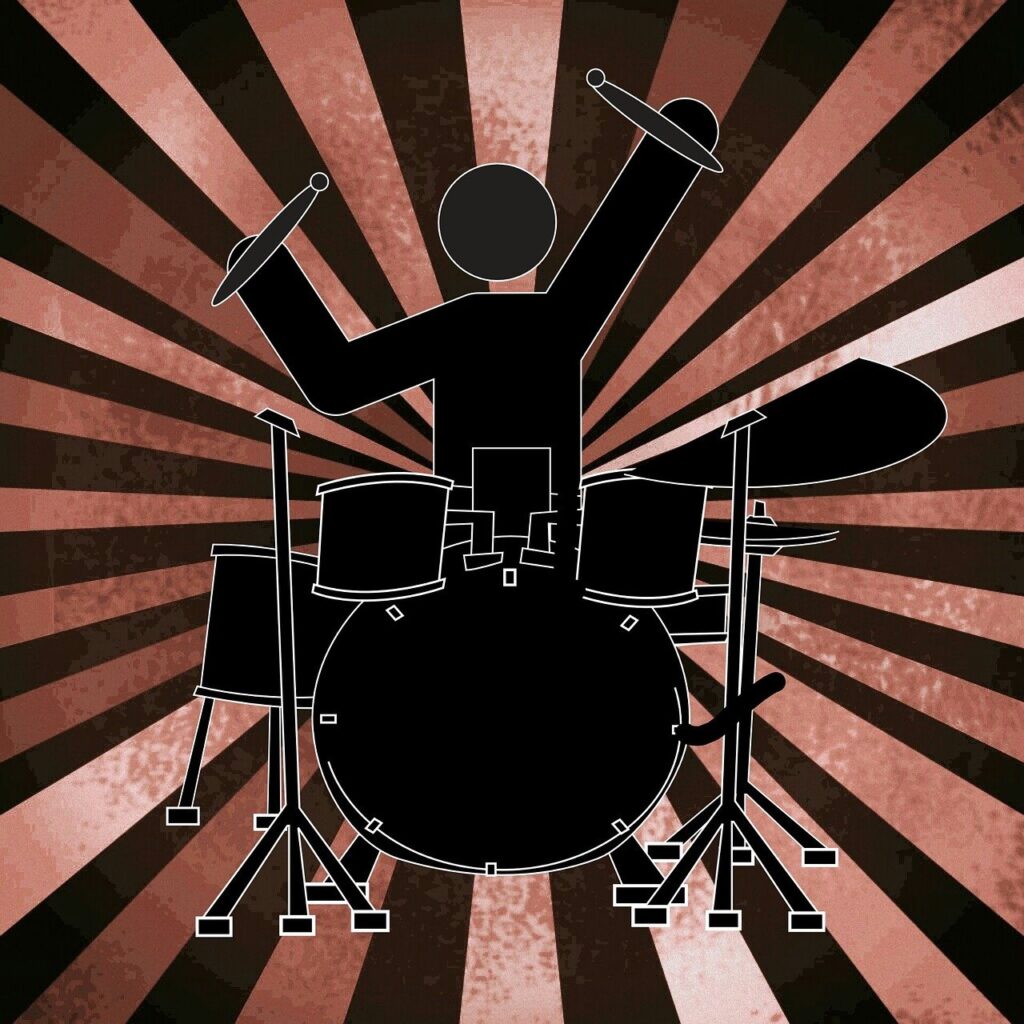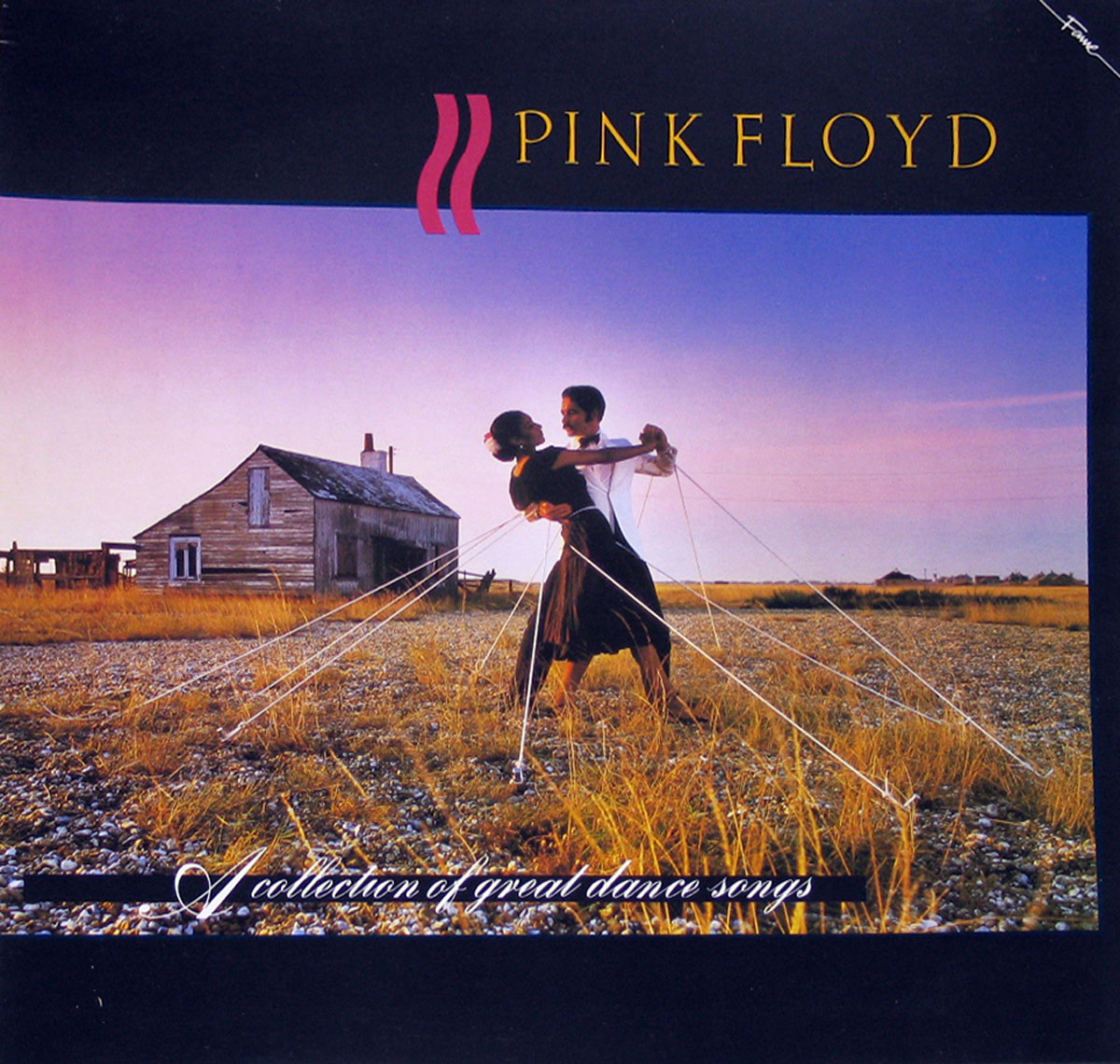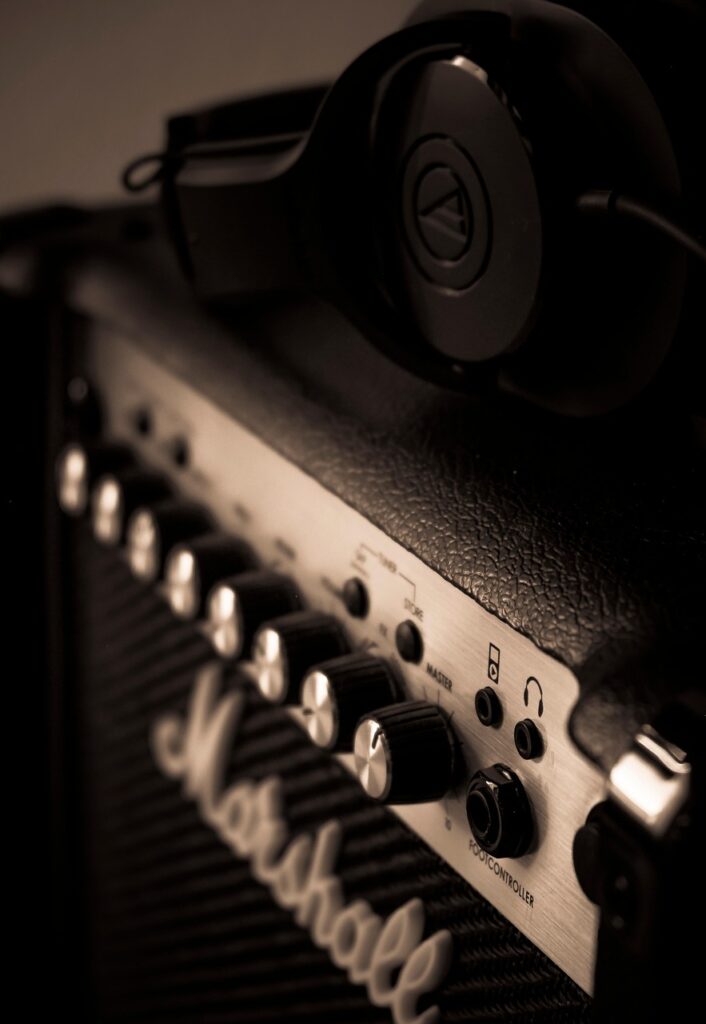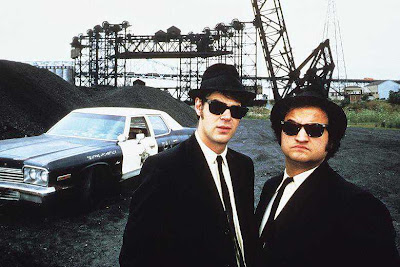
Alright, buckle up music lovers, because we’re about to take a deep dive into the kind of drama that makes your favorite reality TV show look tame. Musicians, bless their creative souls, have long carried a reputation for being, shall we say, a *little* difficult. While their art brings us together, it turns out many of these musical heroes are actually incredibly stubborn individuals, prone to belligerence and epic clashes with one another. It’s almost ironic, isn’t it?
Think about it: when thousands, sometimes millions, adore you, your ego and sense of self-worth are bound to inflate to astronomical levels. Penning numerous classic songs that etch themselves into popular culture is no small feat, and it often comes with an elevated personal opinion. Off-stage, many musicians embody the free-spirited archetype, refusing to be confined by social constructs or rules—a stereotype stemming from the ’50s bad boys like Little Richard and Elvis. While today’s artists might opt for a cleaner lifestyle, the tendency for friction remains surprisingly consistent.
So, if you’ve ever wondered what happens when creative genius meets colossal egos, perfectionism, and the relentless pressure of superstardom, you’ve come to the right place. The annals of musical history are teeming with stories of in-fighting, epic feuds, and breakups so messy they practically become legend. We’re talking about a world where drawing daggers on a bandmate is sometimes just another Tuesday. Today, we’re zeroing in on ten of the most jaw-dropping, bad-blood-fueled band splits of all time, featuring clear examples of narcissism and clashing egos that truly stand the test of time.

1. **The Smashing Pumpkins: A Melancholy and The Infinite Ego-Clashes**Chicago’s very own alternative rock legends, The Smashing Pumpkins, gifted us an incredible run through the 90s, defining an era with their unique blend of goth, shoegaze, metal, and psychedelia. Their back catalogue is a vibrant, kaleidoscopic collection of tunes that marked them out as truly influential. But behind the smashing hits, it wasn’t always sunshine and rainbows for the Pumpkins; in fact, things got pretty gnarly.
By the end of 2000, the band’s classic lineup decided to call it quits, a decision fueled by a cocktail of drug use, alleged “band incest,” and frontman Billy Corgan’s famously inflated ego, coupled with what was described as a “weird soft-boi attitude.” The departure of bass player D’Arcy Wretzky in 1999 seemed to be the final, irreversible nail in that coffin, though whether she was kicked out or walked remains shrouded in mystery.
In the years following that initial dissolution, the former members engaged in no end of public ‘tit for tat’ exchanges. Corgan, never one to mince words, famously labeled Wretzky a “mean-spirited drug addict who refused to get help.” He also pointed a finger at guitarist James Iha, claiming he played a significant role in the band’s original breakup.
But Corgan wasn’t just dishing it out; he also spoke about his own pain. In 2004, he expressed, “the depth of my hurt (from Iha) is only matched with the depth of my gratitude,” a statement that still leaves fans scratching their heads. Iha, however, wasn’t about to take that lying down. He responded in 2005 with a direct retort: “No, I didn’t break up the band. The only person who could have done that is Billy.” Ouch! Ultimately, it seems the group genuinely needed a break from each other, a hiatus that lasted until Iha and drummer Jimmy Chamberlain finally returned to the fold in 2018.

2. **Oasis: The Brothers Grim(m) and Their Backyard Brawl**Ah, Oasis. The pride of Manchester, and the source of arguably the most famous brotherly feud in rock history. Things between Noel and Liam Gallagher had reportedly been simmering for quite some time, with tensions mounting like a British storm cloud. Everyone knew it was going to blow, and boy, did it ever.
In August 2009, just before they were slated to perform at Paris’ Rock en Seine festival, the long-standing animosity boiled over into a full-blown physical fight backstage. Legend has it (and the context confirms) that frontman Liam, in a fit of pure rage, smashed one of Noel’s prized guitars. Now, for any guitarist, that’s practically an act of war, and it proved to be one move too far for Noel.
Immediately following this unforgettable scuffle, the band officially announced their breakup. It was a dramatic, definitive end to an iconic run. After two decades immersed in the intense rock ‘n’ roll lifestyle, it was glaringly obvious that the brothers’ personalities were simply no longer compatible. The explosive nature of their relationship became the band’s undoing.
What ensued, and has continued ever since, is a very well-publicized spat that fluctuates in temperature but never truly goes away. Their post-Oasis careers have been punctuated by barbed comments, social media digs, and the constant speculation of a reunion that feels perpetually out of reach. It’s a never-ending saga that keeps fans both heartbroken and morbidly entertained.

3. **The Everly Brothers: When Brotherly Love Turns Into Guitar-Smashing Rage**Speaking of brotherly love, or the distinct lack thereof, let’s talk about The Everly Brothers. For a period, Phil and Don Everly were celebrated as music’s most exemplary familial partnership, crafting some of the most influential music ever recorded since their formation as a duo in 1956. Their harmonies were pure gold, their songs timeless.
But like all good things, their partnership had a sell-by date, and it arrived in a dramatic fashion in 1973. The boiling point was reached during a show in Santa Ana, California. Don, who had been battling addiction for years, showed up inebriated and completely out of it, unable to remember the lyrics to the hit songs they’d played hundreds of times.
Phil, witnessing his brother’s state and the unraveling performance, was absolutely enraged. In a moment of sheer fury, he physically broke a guitar over Don’s head before storming off the stage and out of the venue. Imagine the crowd’s reaction! That night became a stark symbol of their fractured relationship.
Shockingly, the brothers wouldn’t speak to each other again for a full ten years, until the somber occasion of their father’s death. Even then, the air between them remained thick with tension. They did briefly reunite for a tour in 2005, but that was to be their last dance on stage, as both influential brothers have now sadly passed away, leaving behind a legacy marred by that unforgettable final performance.

4. **The Eagles: Taking It to the Microphones, Then Taking Off!**For a glorious stretch, The Eagles weren’t just California’s most beloved band; they were one of America’s hottest musical exports. Formed in 1971, they dominated the rest of the decade, with their 1976 masterpiece, ‘Hotel California,’ hailed as an undeniable classic. They were touted as “the biggest band in America,” seemingly invincible, flying high above the rest.
However, by the early ’80s, the corrosive effects of fame had left an indelible mark on the band. The initial cracks began to show when original members Randy Meisner and Bernie Leadon decided to quit, unable to tolerate the suffocating nature of their newfound stardom and the noxious working environment. Joe Walsh grappled with his own struggles with addiction, while lead guitarist Don Felder felt increasingly like a second-class citizen within the group.
Beyond the personal tribulations, the band itself was becoming increasingly sterilized, playing events like political benefits that felt far removed from their rock roots. Felder, reaching his breaking point, decided to speak his mind to co-lead singer Glenn Frey. Big mistake. Frey, known for his fiery temperament, was utterly enraged by Felder’s blunt assessment.
The tensions escalated dramatically during their show that very night. Frey and Felder threatened each other via their microphones, a public spectacle of animosity that left little doubt about the depth of their feud. Felder, acutely aware that Frey intended to fight him after the performance, swiftly departed from the venue to avoid an all-out physical confrontation. This explosive night marked the last Eagles performance for a significant period, highlighting just how far personal resentments can push even the biggest bands to the brink.

5. **The Beatles: A Split That Rewrote Music History (And Each Other’s Songs)**When we talk about messy band splits, The Beatles inevitably come to mind. Their breakup is literally a tale as old as time, arguably the most well-known and extensively documented band split in musical history. As the biggest band in the world, The Beatles were a genuine cultural phenomenon, and their decade-long run from 1960 to 1970 fundamentally changed music forevermore.
They pioneered everything from songwriting techniques and recording innovations to groundbreaking album artwork – if it was new and revolutionary in music, chances are The Beatles were at the forefront. Yet, by 1966, the band made the pivotal decision to stop touring, which, while leading to some of their best studio work, also brought with it exhaustion, escalating drug use, and an undeniable increase in infighting among the Fab Four. They even reportedly wrote songs that served as thinly veiled digs at one another, adding a layer of lyrical bitterness to their already complex relationship.
Frontman John Lennon, famously, decided to leave the band in 1969. However, true to the convoluted nature of their final days, he did so without making any formal announcement to the media. The public remained largely unaware of the seismic shift until Paul McCartney, forging his own path, announced his first solo album in 1970.
It was only then, forced into a corner by McCartney’s revelation, that Lennon finally made his own statement, confirming what many had quietly suspected. It was truly all over, drawing the curtain on an era. The entire run-up to, and the dramatic fallout from, the Beatles’ split is a tangled knot of egos, creative differences, and personal grievances, a saga that continues to fascinate and be dissected to this day. The impact of their separation was immense, shaping the course of popular music for decades to come.” , “_words_section1”: “1948
6. **Guns N’ Roses: The Appetite for Destruction… of the Band**Alright, if you’re looking for a band that truly embodied the ‘rock ‘n’ roll excess’ stereotype, look no further than Guns N’ Roses. These hard-rocking legends were practically destined to implode from the moment they rocketed to superstardom. Every single member seemed to come with their own personal set of problems, making any kind of smooth sailing almost impossible.
Their debut album, *Appetite for Destruction*, was a seismic smash hit that launched them into the stratosphere. But with that level of fame came a tidal wave of drugs and egos that inflated to absolutely ridiculous proportions. It was a classic recipe for disaster, and by 1990, things were starting to seriously unravel, like a perfectly styled bandana caught in a chainsaw.
First up, drummer Steven Adler was given the boot due to his crippling drug addiction. Then, frontman Axl Rose, never one to shy away from being, well, *Axl*, became practically unbearable. He was famous for turning up late to shows, leaving thousands of fans (and his bandmates) fuming. The stories even say he once held the band hostage before a gig, forcing Duff McKagan and Slash to sign away their rights to the band’s name. Talk about a power move!
The final straw for the original iteration came in 1993, when Axl Rose reportedly called Slash a “cancer.” That was it. The ultimate mic drop, signaling the end of an era. It would be a long, long time—until 2016, in fact—before Slash and McKagan would return to the fold, proving that even rock gods need a time-out to heal old wounds.

7. **The Beach Boys: When the Surf Split in Two**Now, for a truly unique kind of messy breakup, let’s talk about the surf rock pioneers, The Beach Boys. This isn’t just a story of a band splitting; it’s a tale of a band literally splitting *in two*. Their long, winding history is a chaotic mix of drug use, the tragic deaths of founding members, and, of course, those ever-present inflated egos.
Beyond their groundbreaking music, the constant, simmering rivalry between the band’s mastermind, Brian Wilson, and the perpetually tanned Mike Love, was always a major blight. Their relationship was the ultimate embodiment of antithesis: think Democrat versus Republican, the affable genius against the perceived villainous pragmatist. You get the picture – it was oil and water, and sometimes, actual lawsuits.
Over the years, numerous court cases have added layers of complexity and bitterness to their saga. In fact, these days, Mike Love tours around proudly using The Beach Boys name, while Brian Wilson and Al Jardine tour with their own iteration of the band, but are legally prohibited from using that iconic moniker. It’s like a family Thanksgiving dinner where half the relatives are at one table, and the other half are at another, barely acknowledging each other’s existence.
Fans had a glimmer of hope in 2012 when the band, against all odds, put aside decades of resentment and bruising legal battles to reunite for a 50th-anniversary tour. It was a beautiful, albeit brief, moment. But then, in September of that very year, Mike Love announced a new series of shows with *his* version of The Beach Boys, effectively ending the reunion before many fans even got a chance to see it. It was a true “record scratch” moment.
Brian Wilson, ever the sensitive soul, responded with an op-ed in the *Los Angeles Times*, poignantly asking, “What’s confusing is that by Mike not wanting or letting Al, David and me tour with the band, it sort of feels like we’re being fired… I’m left wondering why he doesn’t want to continue this great trip we’re on. Al and I want to keep going because we believe we owe it to the music.” The surviving members have appeared together a handful of times since for promotional events, but the odds of them playing a single song together again? Extremely high that it’s a definitive “nope.”

8. **Pink Floyd: A Wall of Division, Not Sound**Ah, Pink Floyd. If any band could build a metaphorical wall between its members as epic as their actual musical *The Wall*, it was these British prog-rock heroes. Their story is littered with numerous schisms over the years, mainly characterized by the perennial sparring match between their two main songwriting heavyweights, Roger Waters and David Gilmour. It wasn’t just a two-man show, either; other key members like Richard Wright and Nick Mason certainly didn’t escape the dramatic fallout.
The real fireworks began when Waters left the band in the mid-1980s. What followed wasn’t a peaceful separation but a full-blown legal dispute over the use of the coveted band name. It was an era, as described in the context, characterized by “duplicity rather than diplomacy”—a polite way of saying things got really, really ugly behind the scenes.
Each side had their own version of events. Gilmour strongly claimed that Waters had left the band specifically to hasten its demise, perhaps to spite his former bandmates. Waters, on the other hand, vehemently argued that the other three band members had actually ousted him, threatening to sue him unless he simply walked away. It was a classic “he said, he said” scenario, but with millions of dollars and a legendary band’s legacy hanging in the balance.
In a rare moment of temporary truce, the band did reunite for a brief, iconic performance at Live Aid in 2005, giving fans a fleeting glimpse of what once was. But that flicker of hope was short-lived. By 2006, the band was declared “definitely deceased” by Gilmour, putting a final, melancholic stamp on their fractured history. It just goes to show that even the most innovative musical minds can’t always bridge the chasm of personal animosity.
9. **Simon and Garfunkel: When Best Friends Become Bitter Rivals**For a rivalry that cut deeper than most, you’ve got to explore the story of Simon and Garfunkel. What makes their bitter feud particularly poignant is that, believe it or not, Paul Simon and Art Garfunkel were once best friends! They met in elementary school in 1953 and decided to go into the music business together. It’s a tale as old as time, really: two pals chasing a dream, only for it to unravel dramatically.
Their short, incredibly impactful career became utterly marred by jealousy and backstabbing. Garfunkel, it seems, grew increasingly green-eyed over Simon getting all the songwriting plaudits, and he allegedly used this resentment to demean and belittle Simon about his stature and insecurities. Imagine being in a partnership where one half is constantly undermining the other, especially when millions are watching.
It all got too much, and the iconic duo finally called it quits in 1970, leaving behind a legacy of timeless music but a deeply fractured personal relationship. Any subsequent reunions they attempted were, predictably, brief and often fraught with tension, like their massive Central Park concert in 1981. A new studio album from this beloved folk-pop duo simply never materialized, despite the clamor from fans.
Tensions really boiled over when both were cast in Mike Nichols’ film *Catch-22*, but Simon’s part was cut. He seethed with jealousy as Garfunkel went off to Mexico to film, famously penning “The Only Living Boy In New York” in response. Then, after the monumental success of *Bridge Over Troubled Water*, there was immense pressure on Simon to write another collection of songs, but he flat-out refused. “At that point,” he confessed, “I just wanted out.” Their manager, Mort Lewis, perfectly summed up their complex dynamic: “They both envied the other’s place in the team.” That, folks, is the kind of insight that cuts right to the bone.
10. **The Police: Every Breath You Take… Is Tense**Rounding out our list of musical mayhem, we have the new wave trio, The Police. Their career, spanning from 1977 to 1984, was relatively brief but incredibly potent, packed with hit singles and retrospectively hailing them as one of *the* defining groups of their era. Each of its three members — Sting, Andy Summers, and Stewart Copeland — became massively respected in their own musical fields. Yet, behind the scenes, their phenomenal success was constantly overshadowed by infighting and the colossal clashing of egos.
The core issue? Apart from their shared passion for music, these guys seemingly had absolutely nothing else in common. Imagine being trapped on a world tour with people you barely tolerate, where every rehearsal and studio session feels like a battleground. Things finally fell apart dramatically for The Police after their 1984 tour for the smash-hit album, *Synchronicity*.
Sting, whose star was undeniably rising, was getting increasingly fed up with drummer Stewart Copeland. Meanwhile, Copeland was growing more and more frustrated with how the band was becoming, in his eyes, centered solely around Sting’s “overly inflated ego.” The situation became so incredibly contrite that Copeland, in an act of pure defiance, famously had “Fuck. Off. You. Cunt.” written on his drumskins. Yes, you read that right.
Allegedly, Sting flew off the handle at both Copeland and guitarist Andy Summers. Citing the fact that they had absolutely nothing in common, Sting definitively “left” the band to embark on a highly successful solo career. This proved to be a smart move for everyone involved, as all three went on to enjoy individual triumphs in their respective musical endeavors. Though, like many bands, they did manage to reunite for what was affectionately dubbed “the meal ticket of their lives,” their 2007-2008 reunion tour, proving that sometimes, even bitter rivals can agree on a cash grab.
So there you have it, folks! From the explosive sibling rivalries to the ego-fueled implosions and the quiet, simmering resentments that eventually boil over, these ten bands prove that while music can unite millions, it can also spectacularly tear apart the very people who create it. It’s a wild, often brutal, ride in the world of rock and pop, where creative genius often walks hand-in-hand with colossal drama. And honestly? We wouldn’t have it any other way. The stories behind the music are often just as captivating as the songs themselves.






